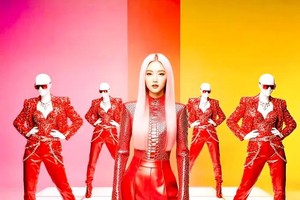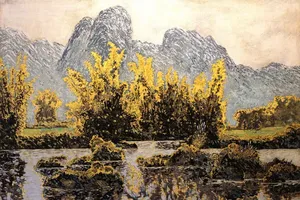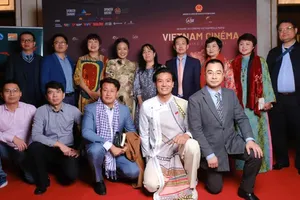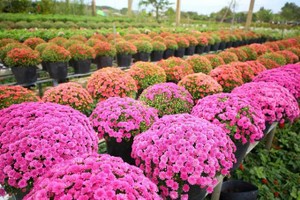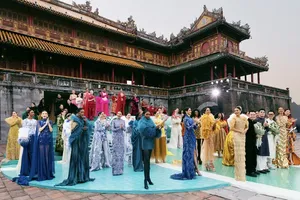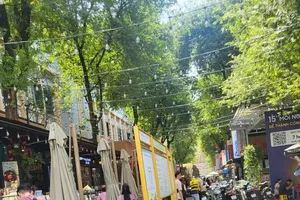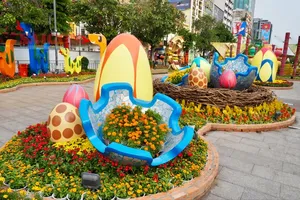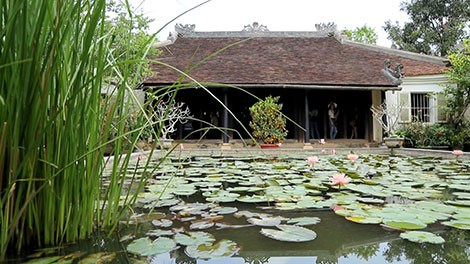
Stopping by the roadside in Nguyen Phuc Nguyen Street in front of a traditional garden house, we met Pham Ba Vinh who is the owner of the house and a grand-child of Pham Ba Pho, Secretary of King Khai Dinh, the twelfth Emperor of Nguyen Dynasty. Mr. Pham Ba Vinh always remembers the height time at his family’s; therefore, he spent three years repairing the house of his grandfather which was destroyed in the wartime.
Vinh smiled gently, inviting visitors to go inside the house and then telling about a village named Kim Long which is mirrored in the still water of the Huong River. This well-known village is famed for beautiful women who were selected to become imperial concubines in the Nguyen Dynasty.
During the period of Nguyen Lords, Hue was chosen as the capital of Vietnam; however, Lords Nguyen Phuc Lan and Nguyen Phuc Tan established a chief town in Kim Long between 1635 and 1687. For the very first time that urban district of Vietnam was built on the banks of the Huong river with the combination of houses and garden. The village also used to be the residential area for the noble class in the citadel of Hue.
Leading guests into the living room to get decent dress before entering a sacred room where altars are placed, Vinh just stood to pour tea to serve guests, saying that he is not allowed to sit in the sacred room where altars of his grand-father are placed but distinguished guests and senior relatives.
Garden house is a beautiful complex in which the house with roofing materials such as wood, bamboo, thatch, and tile is just a part of the harmonic combination of garden, pond, and yard.
Vinh told us about good calculation of people in the old time when building “Ruong” houses with a wooden frame consisting of beams and rafters with mortise and tenon joints which are often built on a large area surrounded by green trees and built on the basis of feng shui principles.
Proving the story, Vinh revealed his house’s architecture and items displayed inside.
For instance, why the door of the sacred altar room is low while door – sill is high. People of the old time built low door and high doorsill because they want to remind visitors that visitors must be quiet in here – a holy place.
Mr. Vinh also introduced uses hubble-bubble and spittoon to spit residues after chewing betel nut which can drive mosquitos away or treat those bleeding because they step on a piece of glass accidentally. Walking along the house’s covered corridor, we headed for another house with three compartments with two lean-tos where the family’s daily activities take place.
Vinh said in the old time when four generations under one roof, just a few schools were built, the house was a place where senior family members taught their children how to write and how to behave well.
Therefore, it can be said that Ruong houses not only maintain and pass Vietnamese culture from generations to generations but they are architectural arts manifesting the harmony between people and the nature and between material and spiritual lives.
Writer Nguyen Khac Phe said if a person don’t leisurely walk along corridors of a ruong house or pay a visit to a palace when visiting Hue, it can’t count that you have visited the capital city meanwhile writer Hoang Phu Ngoc Tuong supposed that ruong house is a residence of soul of people in the old time or residue of spirit which our ancestors have left for us.
 Inside a ruong house
Inside a ruong house
Even with the passage of time and lots of changes in the country, many garden houses – unique relics only found in Hue and in surrounding areas are both a place of peace and cultural destination of Hue. Here, each of us can perceive the live in different way.
The old structures, dotted around the city and also in suburban areas, are at risk of becoming deteriorated due to war and the ravages of time, as well as the rapid pace of urban development.
Preservation of these old houses is essential to keeping traditional cultural values alive and well; accordingly, Thua Thien-Hue authorities have recently adopted a policy of restoring and preserving Ruong houses as part of a larger effort to preserve Hue culture.
Deputy Head of the city’s unit overseeing the management and protection of garden houses Pham Thi Quynh Dao said that of 4,000 garden houses in Thua Thien – Hue which was built in the area of 600- 1,500 meter square each, 705 ruong houses and 150 typically ancient houses are in the list of special preservation.
The preservation project has been carried out by Hue authorities, aiming that 25 percent – 40 percent of garden houses would be restored in the period 2015-2020 according to the People’s Council’s resolution.
Hue City authorities also called for giant enterprises’ investment in restoring ancient houses to develop the values of ruong houses. Moreover, city authorities facilitate formalities for those who want to make miniature ruong house as tourism souvenirs as well as tours to garden houses to help owners of garden houses to maintain the ancient sites.
